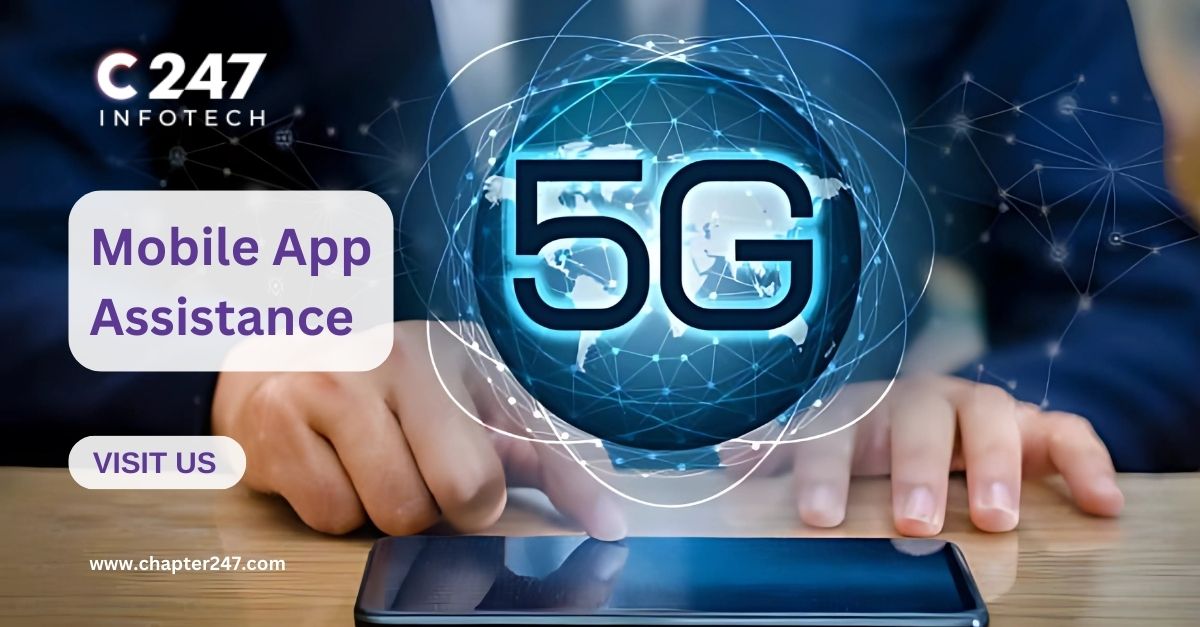5G technology is currently revolutionizing the mobile application development industry. This new generation of networks provides high speed, faster access time, more comprehensive coverage to connect massive numbers of devices, and low latency, making it a potential ground for developers. However, the upside of 5G is that it is not without its challenges.
This means that developers need to approach the usage of their capabilities more strategically and align these strategies to new development processes. This way, in this article, we will look at what benefits 5G networks and mobile apps hold for mobile application development and the hurdles that must be considered.
Opportunities in Mobile App Development with 5G
According to Statista, by 2026, global expenditures in 5G infrastructure will total $58 billion, propelling the rollout of a high-speed 5G network throughout different locations. Additionally, with higher data rates, incomparable speed, and lower latency, 5G is 100 times faster than the 4G network.
This allows real-time conversation, quick data exchange, and smooth multimedia content. A real-time response-based 5G mobile app such as games or live streaming enhances 5G low latency.
- Enhanced User Experience: 5G networks and mobile apps offer more excellent connectivity due to the increased speed; hence, the mobile applications developed for this platform can include better graphics, video calls and AR simulation. The increase in speed on the network increases the usability of the mobile apps to enable interaction among the users.
- Seamless IoT Integration: 5G will drive the IoT. With many connected devices, a digital 5G mobile app can interact with intelligent objects, whether wearables or home automation technologies. It helps the developers develop applications that consume less bandwidth and use less power for IoT solutions.
- Support for Immersive Technologies: High speed is essential for immersive technologies such as Augmented Reality and virtual reality since 5G networks and mobile apps deliver applied data to govern such artificial manifestations rapidly. This advancement will go a long way to enhance the operation of business sectors like the educational, retail, and health sectors.
- Smoother Video Streaming: With the help of 5G, the quality of streaming videos increases, and a 5G mobile app can stream videos in 4K quality without disruption. The low latency means no interruptions on recordings or playback of videos and enhanced cloud compatibility to enable users to upload and download media at a go.
- Cloud-Based Solutions: The performance characteristics of 5G networks and mobile apps enhance cloud computing’s usability for mobile applications. It can enable developers to design applications with low reliance on mechanical objects so that users can obtain data and functions anytime.
These opportunities will be why over 1.7 billion 5G connections will be available worldwide by 2025, reaching almost 40% of the world’s population, according to GSMA.
Challenges in Mobile App Development with 5G
Mobile application development at high speed is full of many opportunities but a few possibilities have some threats for developers. Some of the primary obstacles to developing a fast 5G mobile app are as follows:
High Development Costs
According to Ericsson’s Mobility Report, more than one-third of all mobile subscriptions will be 5G by 2026, with over 3.5 billion subscribers. However, 5G networks and mobile apps have additional needs that considerably increase costs. Actualization of 5G capabilities calls for new hardware and software and enhanced developer training. This leads to expensive development applications that lock out anyone who is not a large organization.
Limited Availability
It is also essential for the reader to understand that 5G networks and mobile apps have not been deployed in all the world’s regions. It becomes challenging for developers to conduct 5G application tests and deploy them within areas that do not have adequate 5G coverage. This may limit the market access of high-speed mobile applications.
Multifaceted tactical specification
The 5G networks and mobile apps entail architectural knowledge of the technology, protocols, and standards. Application developers of apps need to be able to incorporate what comes with newer API and SDK integration to build applications that can fully leverage 5G. This, in turn, increases the difficulty and duration it takes to develop applications that will run on mobile devices.
Infrastructure Challenges
One more critical absorption backbone can be felt to enhance 5G’s benefits. Remote and rural areas will not have highly developed networks to facilitate high-speed data transfer of a 5G network, which underlines their inability to be used in the developing world.
Conclusion
The emergence of 5G networks and mobile apps as a new generation of networks has a lot of potential for mobile app developers. Every element, from a smooth IoT connection to improved immersion, is enabled by 5G for faster, more powerful mobile platform applications. Though the continued minimal use can be attributed to high costs, lack of access, and complexity, specific issues must be solved. Applying best practices and leveraging the capabilities of 5G Chapter247 helps businesses grow. Developers can make the next generation of mobile apps to transform user experience in a connected world.







